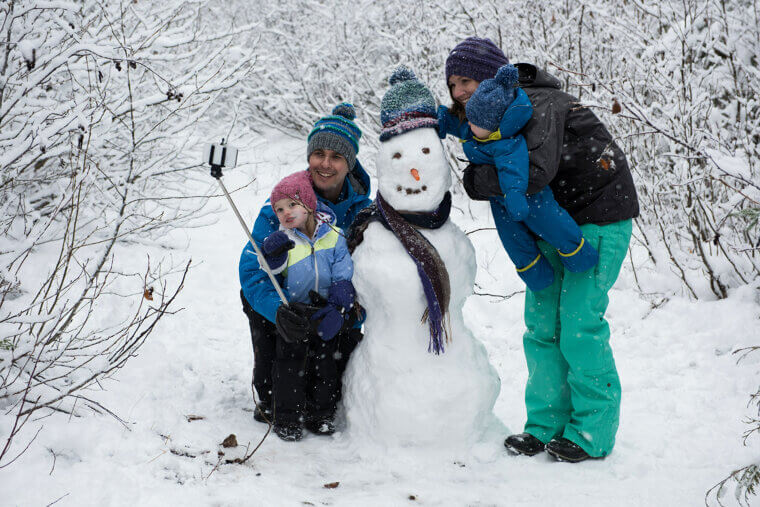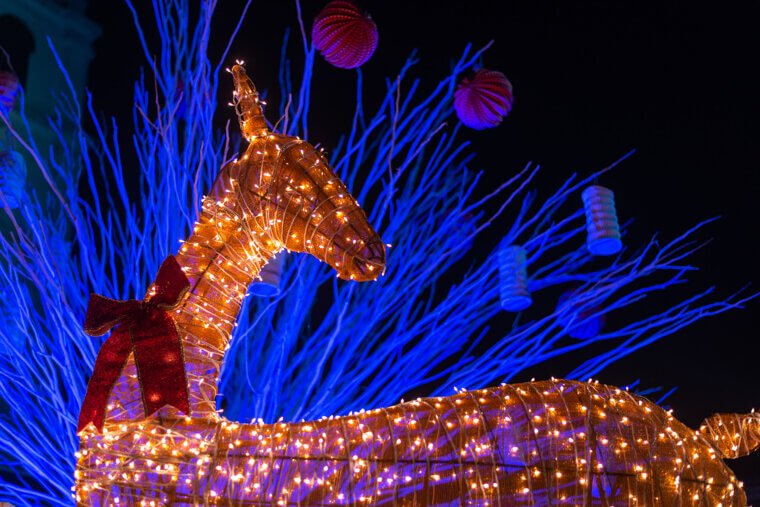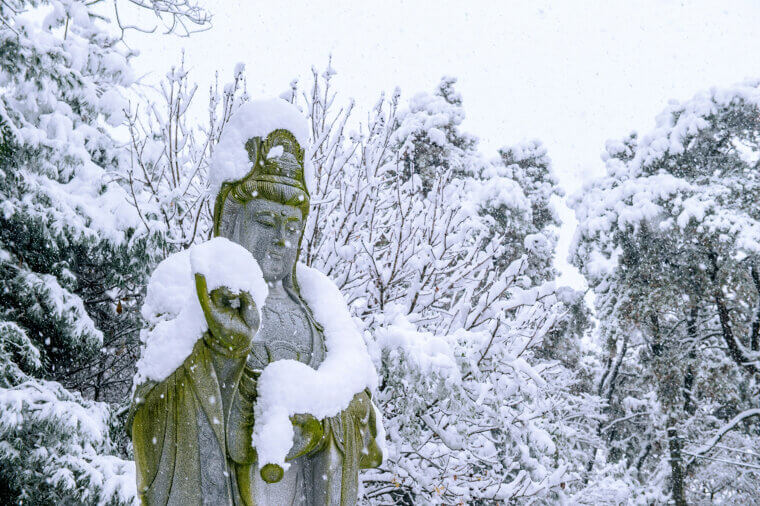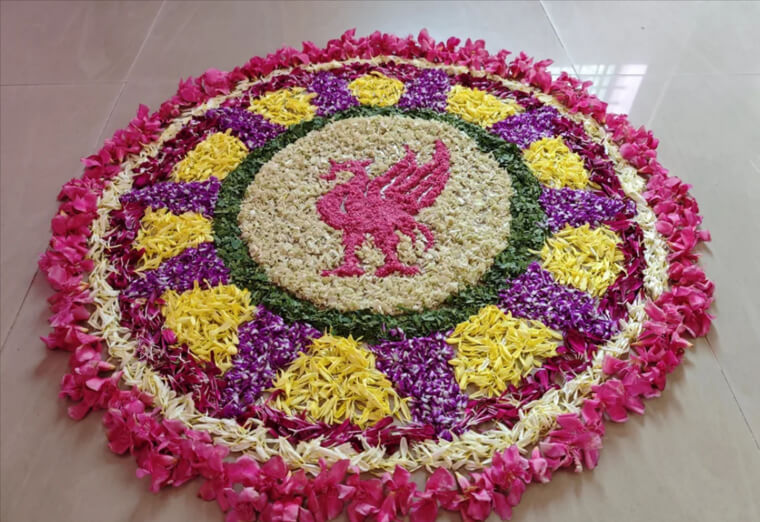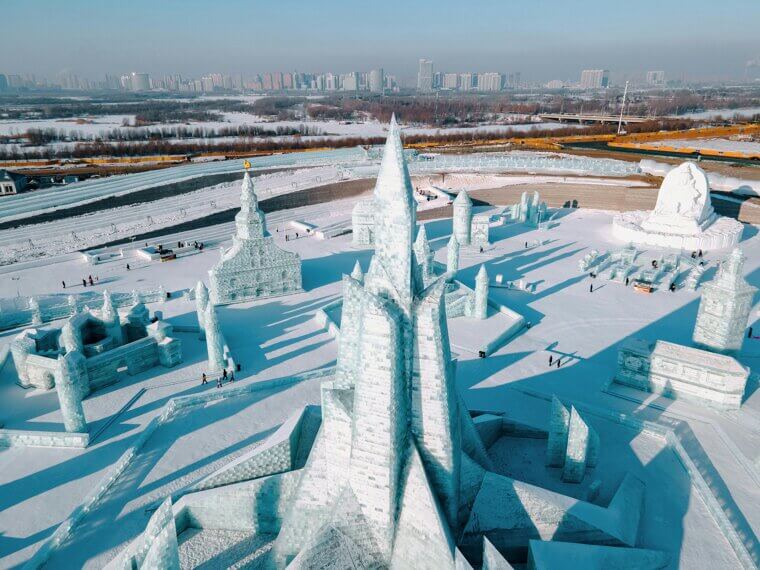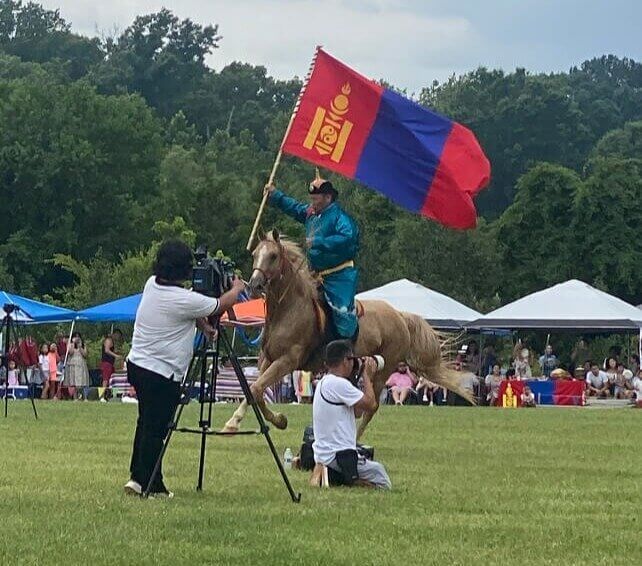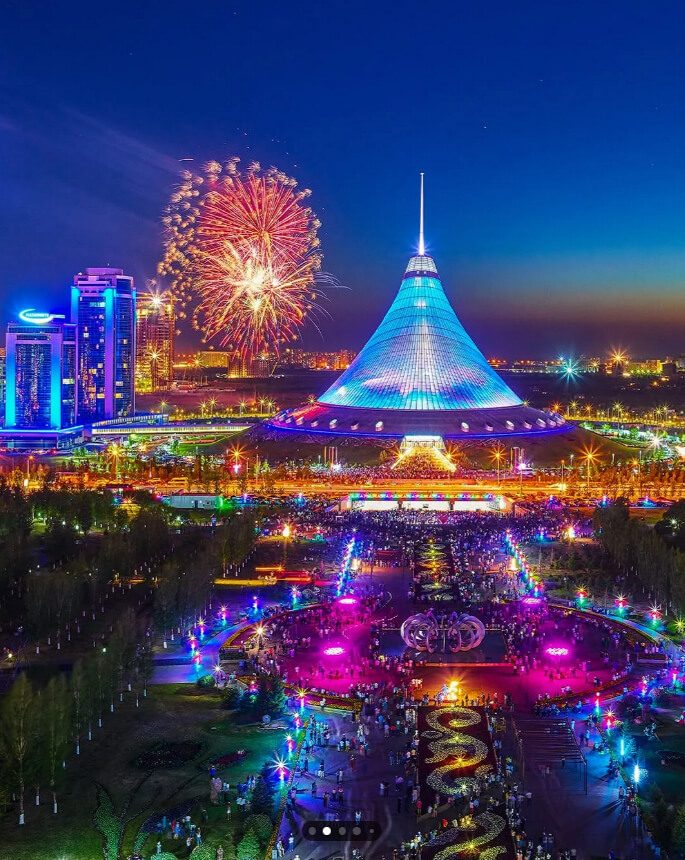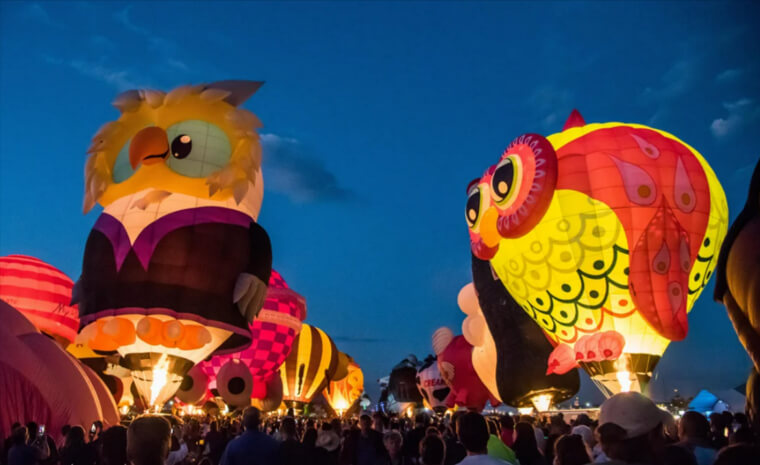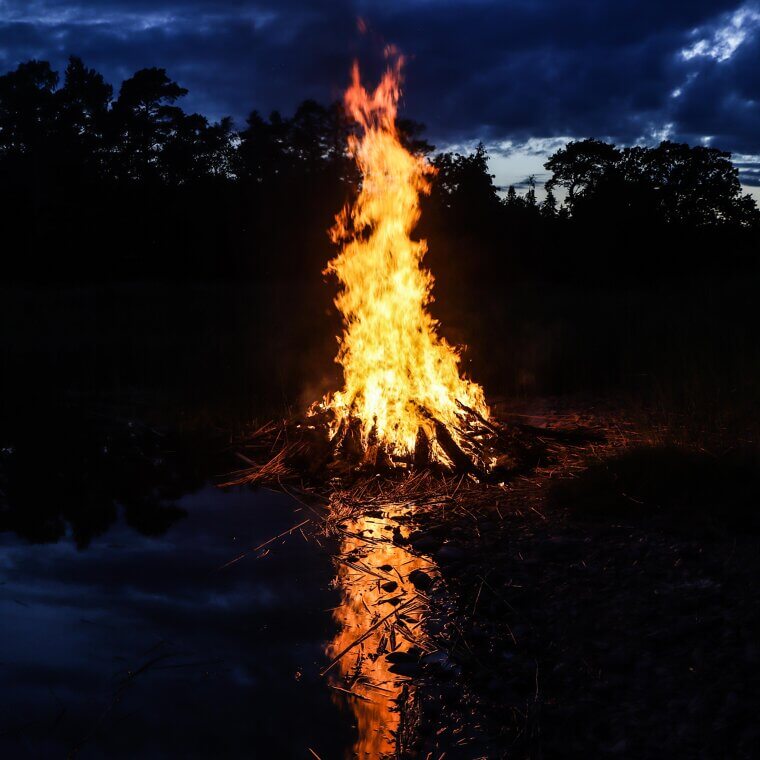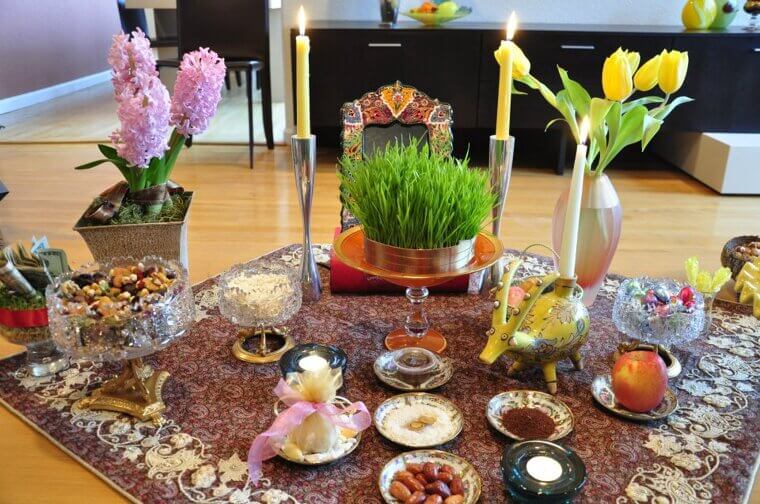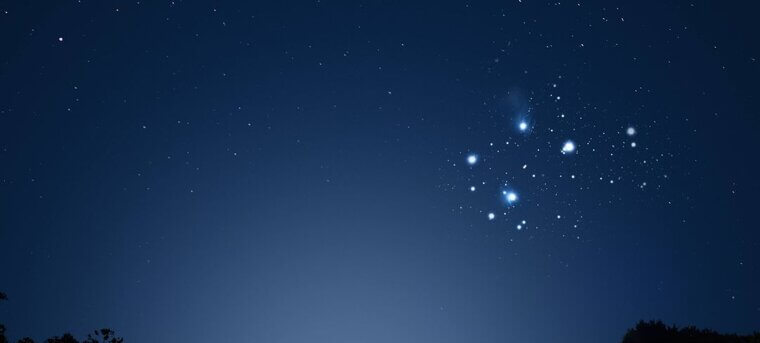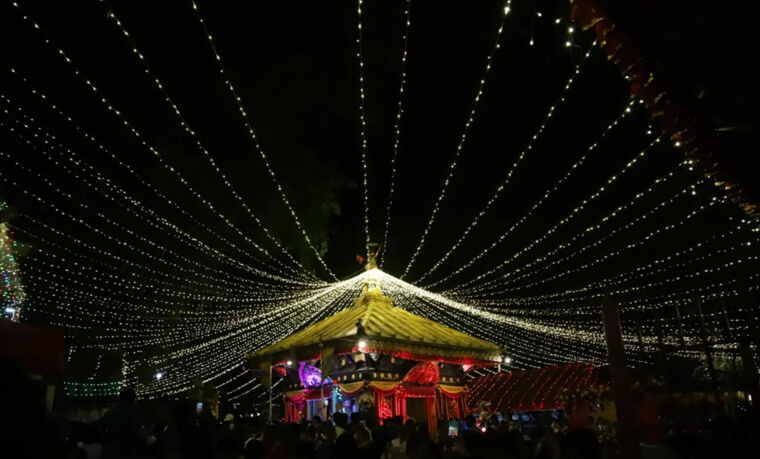Maslenitsa (Winter Farewell, Sun Welcome)
Maslenitsa is Russia’s bright goodbye to winter and hello to sun, timed as days lengthen and the Siberian High finally loosens its grip. For a week, towns stack golden blini as edible suns, whirl through sleigh rides, and circle bonfires before a straw effigy crackles into sky. After months of deep freeze, the first thaw turns streets to a mix of ice and slush, but spirits run warm. Expect late February into early March nationwide. Travelers: waterproof boots, traction, and curiosity pair best with hot tea and jam and butter.
Carnaval De Québec (Ice, Snow, and Steam)
Québec’s winter carnival turns deep cold into theater, anchored by Bonhomme’s grin. Reliable midwinter chill along the St. Lawrence sets the stage for ice canoe races, snow baths, illuminated parades, and glittering palaces carved from river blocks. Locals lace up, visitors layer wool beneath windproof shells, and everyone warms hands around maple taffy pulled on snow. The festival thrives late January to February, when daylight grows but breath still fogs briskly. Expect squeaky snow, frosty eyelashes, and a festival that proves minus twenty makes excellent building material for creative engineers.
Sapporo Snow Festival (Yuki Matsuri)
Sapporo’s Yuki Matsuri transforms Hokkaidō’s long, dry cold into luminous sculpture. Snow and ice rise as castles, creatures, and pop culture façades, glowing after sunset while vendors steam noodles and cocoa. The Sea of Japan snowbelts supply endless raw material; subzero stability keeps edges crisp. Families slide down snow ramps; photographers dance between tripods and warm gloves. Early February delivers the sweet spot. Polished sidewalks demand anti‑slip cleats, and layered socks. In a place nicknamed “snow country,” winter becomes studio, playground, and gallery under perfectly frosty skies for several days.
Onam (Monsoon Harvest Home)
Onam paints Kerala emerald during peak monsoon, when paddies brim and rivers braid through coconut groves. The season’s abundance powers snake‑boat races, intricate pookalam floral carpets, and the grand vegetarian sadhya served on banana leaves. Onam celebrates dramatic reversal after pre‑monsoon heat, a wet‑season homecoming wrapped in myth and hospitality. Expect daily downpours, gleaming backwaters, and thunder that applauds between races. August to September is prime. Travelers should trade heavy coats for light rain gear, sandals that grip, and appetites generous enough to honor second helpings of banana leaf feasts.
Harbin Ice & Snow Festival
Harbin builds a neon winter city from the Songhua’s frozen skin, where palaces and arches glow like candy under polar air. The Siberian masses provide consistent cold; workers gather thousands of ice blocks, which they then use to sculpt cathedrals and slides. Visitors skate rivers, sip hot millet wine, and pose beneath laser‑lit towers. January through February is the peak, when minus twenty behaves more like a construction spec than a warning. Dress for extremities: insulated boots, face protection, and spare batteries. Cameras tire first, but your grin will remain vibrant until the eyelashes frost beautifully in tonight's breeze.
Naadam (Summer on the Steppe)
Naadam crowns Mongolia’s high summer with wrestling, archery, and thundering horse races across grass that finally outpaced winter. Peak daylight and dry air make colors pop; banners snap under enormous blue skies. Nomadic pageantry parades past, child jockeys fly, and fermented mare’s milk toasts victories. The timing is a slender window between dzud winters and dusty springs, when pastures surge. Mid‑July everywhere delivers the clearest air. Pack sun hat by day, a jacket by night, and respect for diurnal swings that surprise even seasoned travelers on the open steppe always.
Nauryz (Equinox, New Pasture)
Nauryz is Central Asia’s spring new year, timed to the equinox when steppe frost loosens and first shoots push through. Communities raise yurts, share nauryz kozhe—seven‑grain soup for luck—and stage aitys song duels that trade wit like warm sunlight. The festival sits between iron winter and furnace summer, a deep breath before pastures sprint. Celebrations unfold nationwide around March 21. Expect blue skies and lively winds; comfort is a windbreaker away. Street kitchens steam, elders bless seedlings, and towns reset calendars to the season’s oldest clock: returning light for all.
Albuquerque International Balloon Fiesta
Albuquerque’s Balloon Fiesta lifts hundreds of bright envelopes into calm autumn air, riding the “Albuquerque Box,” a layered wind pattern that ferries balloons out and back like magic. Cool, stable mornings after the summer monsoon create ideal thermals. Dawn Patrol tests the air; special‑shape rodeos charm daylight; evening glows turn the field into a lantern sea. Early October usually delivers the sweet spot. Expect shivers at sunrise, T‑shirt warmth by lunch, dress modular. The spectacle is part weather lesson, part carnival, proof that gentle winds can organize enormous wonder for crowds.
Juhannus (Midsummer Light)
Juhannus celebrates the year’s longest light in Finland, when the sun barely dips and lakes mirror gold midnight. Families stoke kokko bonfires, whisk skin with birch branches in sauna, then dive into water that wakes every cell. The festival is a love letter to brightness after months of polar dusk. Held nationwide on the weekend nearest the June solstice, it stretches dinner into dawn. Expect mosquitoes with graduate degrees; repellent and long sleeves help. Bring good company, patience for sunsets that refuse to end, and songs that remember winter fondly.
Nowruz (Spring Equinox Table)
Nowruz marks the Persian New Year at the exact spring equinox, when daylight balances and winter finally loosens its continental grip. Families set the haft‑sin table—sprouted greens, vinegar, apples, garlic, and coins, each symbol nudging prosperity and renewal. Homes get scrubbed; fire‑jumping clears old misfortune; visits weave neighborhoods together. The holiday synchronizes society to nature’s biggest pivot in light. Celebrated across Iran and the diaspora, timing follows astronomy, not convenience. Expect closed offices, busy roads, and parks brimming with picnics. Plan intercity travel early and arrive hungry for sabzi, rice, stories to share.
Matariki (Winter Stars, New Year)
Matariki, the pre‑dawn rise of the Pleiades, resets the Māori year in mid‑winter, inviting remembrance, planning, and planting intentions. Each whetū in the cluster speaks to a domain: winds, waters, crops, those we honor, so people read its brightness like a seasonal forecast. Feasting, storytelling, and community hui warm the dark months. In a maritime land with sharp swings in day length, the sky becomes a calendar and a compass. Celebrations run June to July. Expect crisp mornings; bring a thermos and wool. Look east before sunrise; find a shimmering promise gathering light for everyone.
Dashain (Clear Skies After Monsoon)
Dashain stretches across Nepal as skies clear after the monsoon, mountains reappearing like curtains rising. Families visit temples, receive tika blessings, and nurture jamara sprouts, which symbolize their green hopes. Rooftops flutter with kites; villages hum with reunions and goat curries. The festival celebrates victory and renewal, timed to post‑monsoon stability that brings crisp visibility and kinder trails. Dates follow the lunar calendar in September or October. As the trekking season begins, we recommend booking buses and lodges early, as they tend to fill Expect blue mornings, cool evenings, and neighborhoods freshly washed by weeks of rain and sun.

